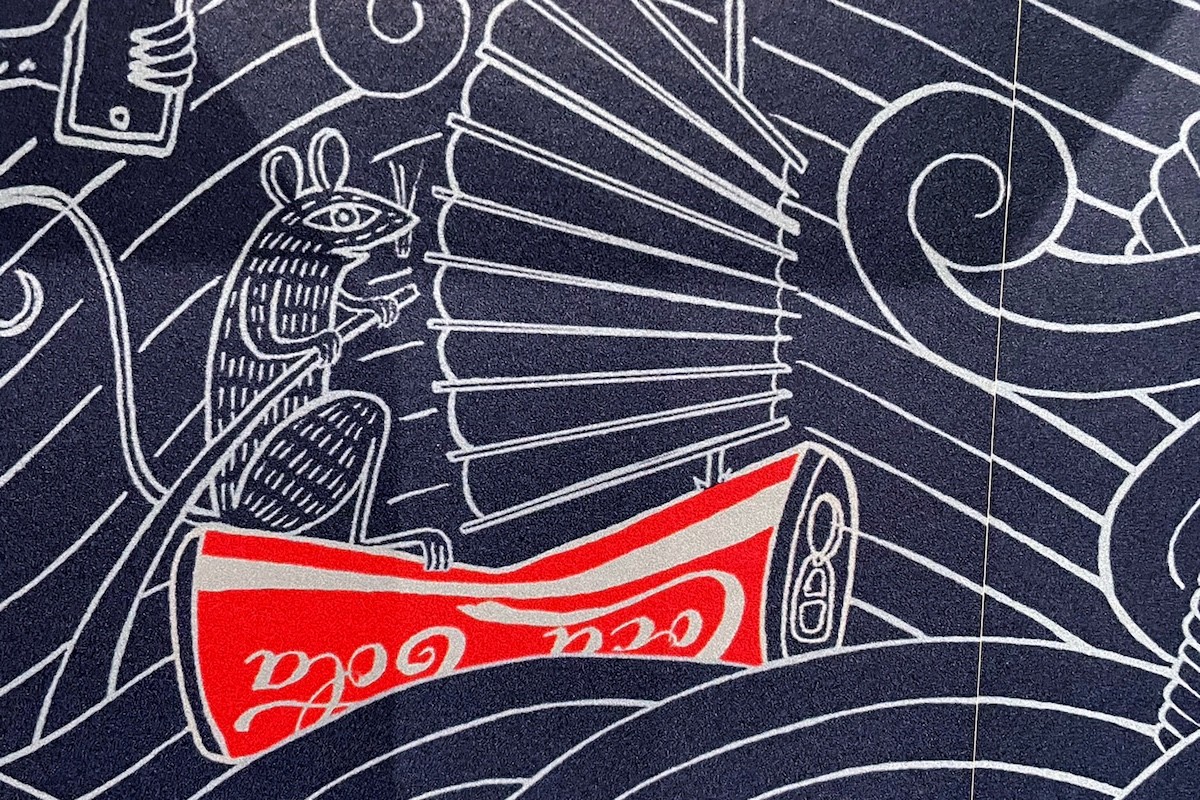Headlines be damned, “The Nature of Art” is a serious exhibition.
The show—at St. Petersburg’s Museum of Fine Arts through April 14—is full of great art and smart commentary on humankind’s relationship with Earth. Anyone who takes the time to fully experience this campus-wide exhibition stands to learn a lot about humanity’s relationship with art and nature throughout history.
But it’s easy to miss things because of the sprawling nature of this exhibition divided into eight themed sections scattered throughout the museum.
After a couple of hours roaming the MFA, soaking up all the amusing and eye-opening details within “The Nature of Art,” we made a list.
Here are 10 fun ways to experience “The Nature of Art” at the MFA.
Rats on Coke cans, bougie baby bottles, among easter eggs in MFA St. Pete’s ‘Nature of Art’ show
By Jennifer Ring on Mon, Jan 22, 2024 at 4:05 pm
Photo by Jennifer Ring
A rat sails away on a Coke can in Duke Riley’s “Tidal Fool.”
Scroll down to view images
Find the condoms in Duke Riley’s “Tidal Fool.”
Fans of USF Graphicstudio will recognize Duke Riley’s work the moment they walk into the MFA’s Hough Minor. Riley’s prints are like the fine art version of “Where’s Waldo,” except in Riley’s work, you’re looking for trash, not some guy in a striped suit. And since “Tidal Fool” covers an entire wall at the MFA (it’s wallpaper), there’s a lot of trash to find. Riley’s embedded everything from Chinese takeout boxes and branded beer cans to condoms, tampons, and sex toys into this work. See if you can locate the rat sailing on a crumpled Coke can across the ocean or the mermaid guzzling Colt 45. It’s all there. We couldn’t make this stuff up.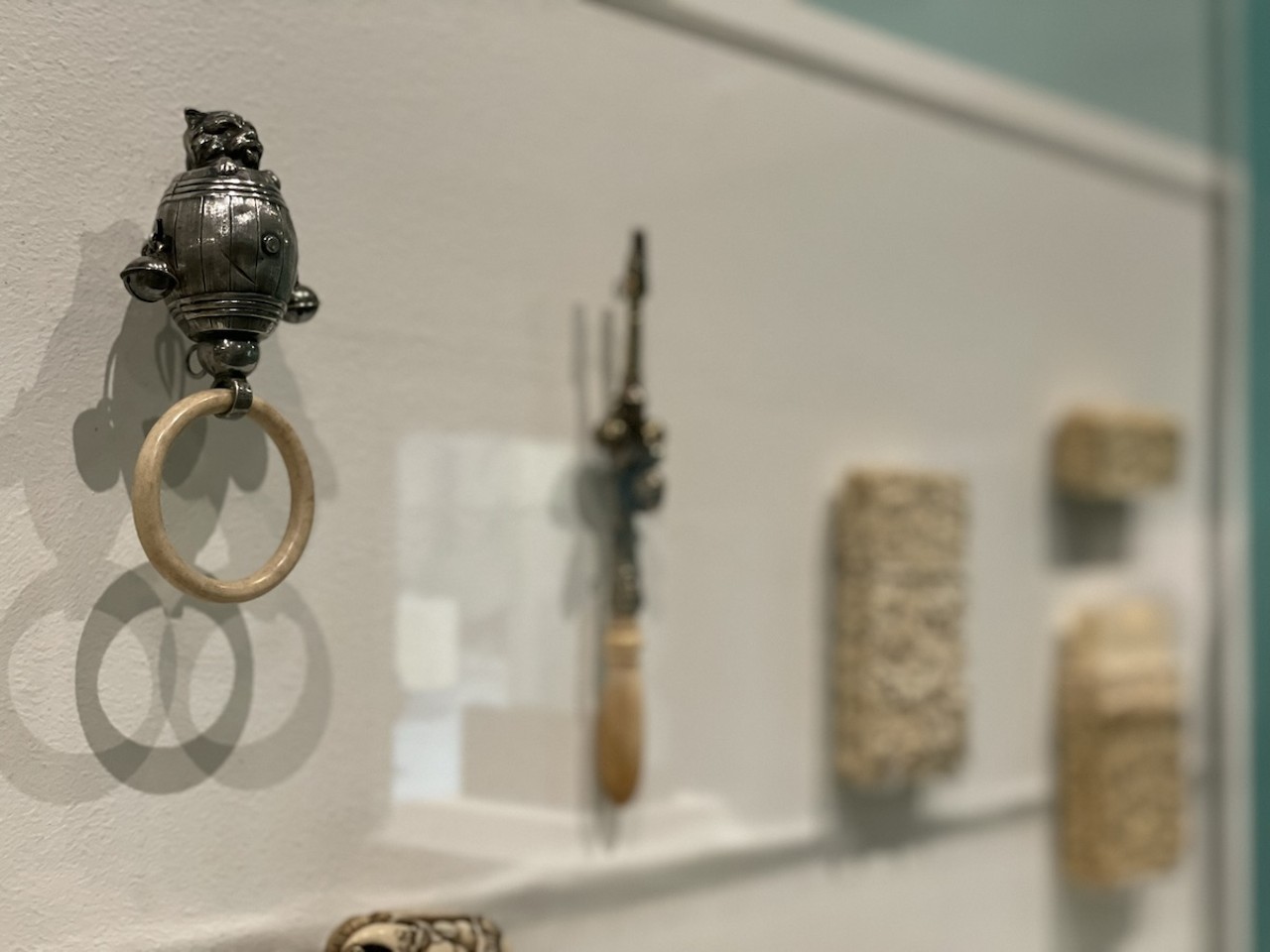
Photo by Jennifer Ring
Find the baby rattle among the ivory carvings in the MFA’s Hazel Hough Wing.
Through documenting art history, the MFA’s collections also document the history of rich people showing off. In this case, by placing priceless luxury items into the hands of babies and small children. The point of these pieces, nestled within the “I Love You to Death” segment of “The Nature of Art,” is to demonstrate how humanity has depleted limited natural resources to pad their wallets.The item on the far left is a baby rattle made from silver and ivory.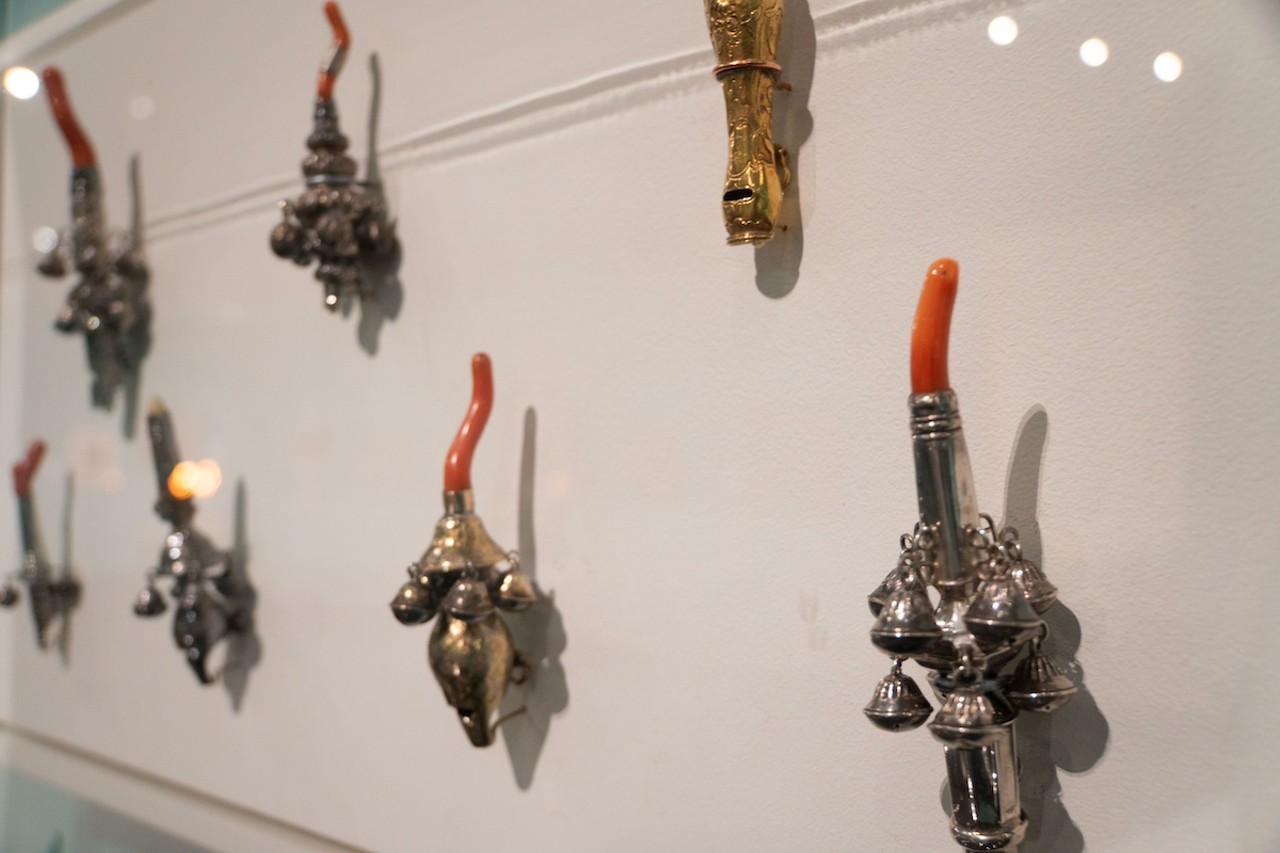
Photo by Jennifer Ring
Cut your teeth on coral.
Unidentifiable antiques are the most interesting kind of antiques. We never would have found Hester Bateman’s luxury silver rattles with coral teethers if MFA Curator of Collections and Exhibitions Stanton Thomas hadn’t pointed them out to us during a press preview. These silver rattles with coral teethers are for the wealthy toddler who likes rare, shiny things
Photo by Jennifer Ring
You don’t need us to tell you to find Christian Sampson’s “Projection Painting” in “The Artist as Curator.” You can’t miss the colored light cast upon the gallery wall next to Monet’s “Houses of Parliament: Effect of Fog.”
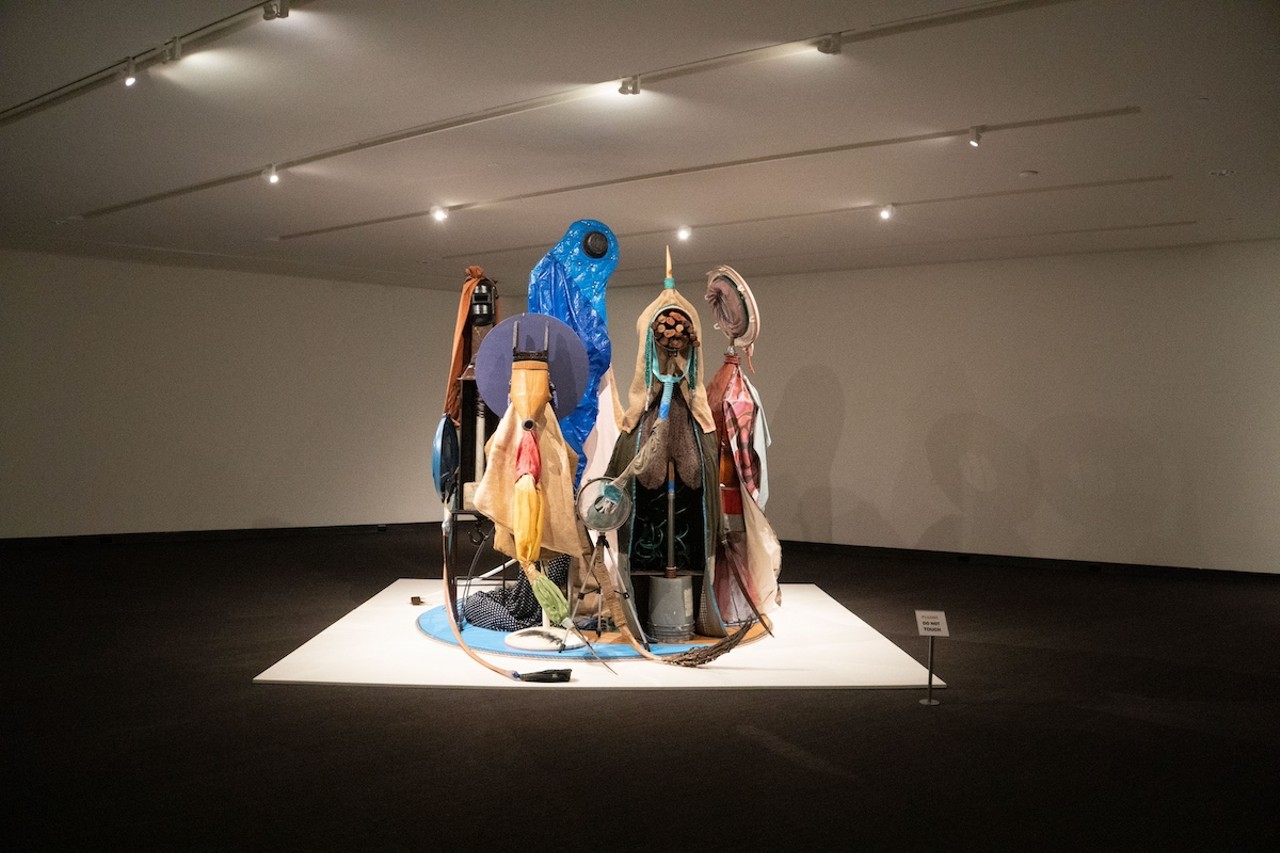
Photo by Jennifer Ring
Find the boxing references in Daniel Lind-Ramos’ “Sentinels of the New Moon.”
Contemporary artist Daniel Lind-Ramos makes sculptures out of everyday materials he finds in the streets and on beaches in his hometown of Loíza, Puerto Rico. We saw a drum, a bucket, and possibly a shop vac in Lind-Ramos’ monumental “Sentinels of the New Moon.” Lind-Ramos’ sentinels are protectors who fight to preserve our threatened coastal mangroves. Look closely, and you may find a reference to fighting; think boxing paraphernalia.
Photo by Jennifer Ring
Place yourself within Brookhart Jonquil’s “E)A)R)T)H).”
Miami artist Brookhart Jonquil is one of many contemporary Florida artists taking climate change as inspiration. The MFA has three Jonquil works in “The Nature of Art,” but “E)A)R)T)H)” is the only one you can literally see yourself in. The sculpture centers an expanded polystyrene Earth within five pieces of mirror glass, encouraging viewers to consider their relationship to the planet.Take a trip to the moon in “The Overview Effect.”
Seeing Earth from space affects Astronauts with a profound sense of awe. It’s called the overview effect, and it’s something you can’t experience in an art museum. But you can see the next best thing at the MFA’s “The Nature of Art” — an iconic photograph of Earth taken by U.S. astronaut William Anders from a lunar orbit during the Apollo 8 mission in 1968.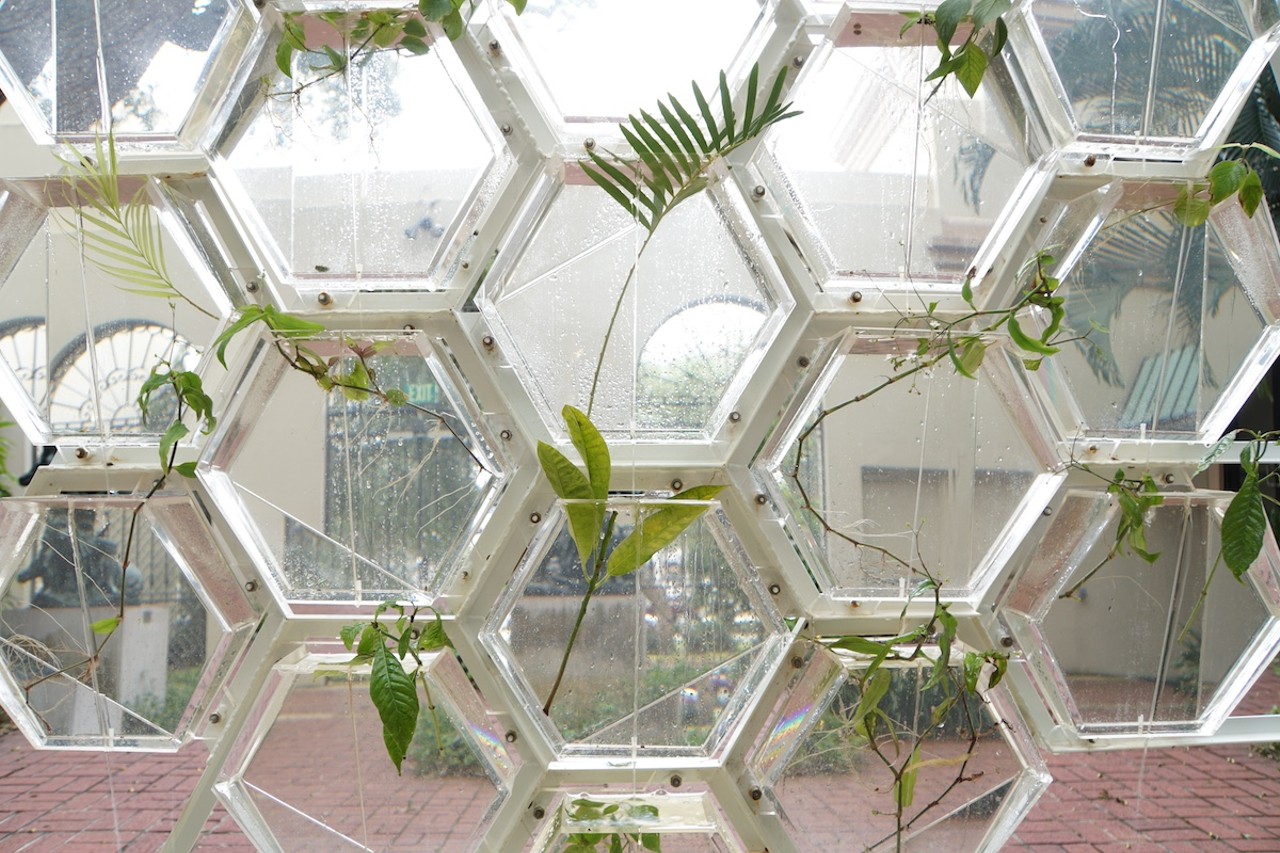
Photo by Jennifer Ring
Watch plants propagate in Jonquil’s “Multiplication Portal.”
You’ll have to step out into The Stuart Sculpture Garden to experience this work of art. Jonquil’s “Multiplication Portal” is a hexagon-shaped sculpture made of plexiglass hexagon planters. Each planter contains a plant cutting growing roots in water. Jonquil created the work to inspire viewers to continue doing the small things that nurture life on our planet.Look up to the sky in Jonquil’s “Groundless.”
Don’t forget to look up. That’s what Jonquil did when he created “Groundless,” clouds painted on steel en plein air. Jonquil gave up control of the work the moment he incorporated mirrored surfaces. But thanks to the mirrors, Jonquil’s clouds change and move like real clouds, but also not like real clouds.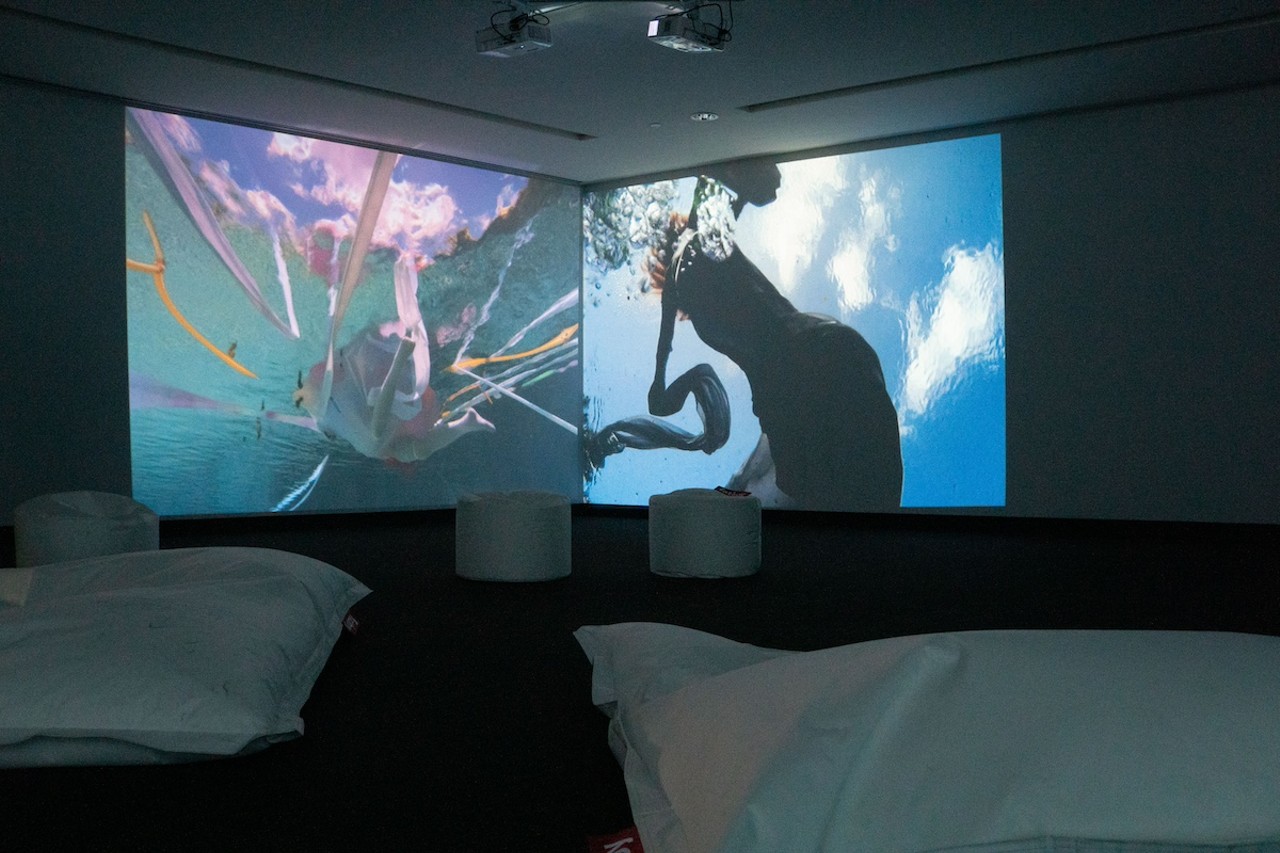
Photo by Jennifer Ring
Chillax in a sea of dancing mermaids.
Head up to the second floor to see German-Brazilian artist Janaina Tschäpe’s “Blood, Sea,” which sounds far more foreboding than it is. The MFA nestled Tschäpe’s work in a dark room filled with floor pillows and bean bag chairs. Dancing mermaids, filmed at Weeki Wachee Springs, are projected onto the gallery walls, immersing the viewer in the underwater world of mermaids.Find the naked lady in Sarah Meyohas’ “Interference #19.”
The MFA’s Curator of Contemporary Art, Katherine Pill, walked us through “The Artist as Curator” section of “The Nature of Art.” Here, visitors can view two pieces of art created by contemporary artists in response to works in the MFA’s permanent collection.Sarah Meyohas created a holographic work inspired by Georgia O’Keefe’s flowers, which commentators often sexualized since flowers contain a plant’s reproductive organs. From a distance, Meyohas’ “Interference #19” looks like a simple geometric arrangement of black glass. But come closer, and you’ll see body parts within the colorful flora in Meyohas’ hologram.

